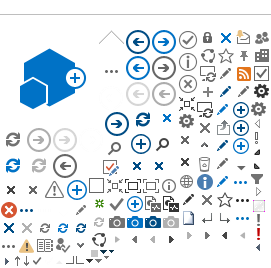The new front end has very long optical path lengths distributed over two optical tables. These factors are detrimental to the stability of the beam alignment and make it prone to be affected by temperature drifts. For these reasons, this section of the laser chain was chosen for the deployment of the first part of an automatic beam alignment system.
The system operates in a similar way to an adaptive mirror. The beam position is monitored at several key points by digital CCD cameras that image the beam profile viewed through the back of a mirror. The software controlling the system calculates the centroid positions of the acquired images. If the beam position differs significantly from a predetermined set point, the beam is steered back by means of motorised actuators fitted to mirror mounts located upstream from the cameras.
To have the units operating in pairs ensures that the downstream beam path after such a pair is then fully defined, both in terms of position and direction. For applications where the beam pointing direction is more important than the beam position, a far field rather than a near field image can be used, i.e. the beam is focused onto the sensor. Picomotors were preferred over other actuators like stepper motors or piezo stacks because of their compactness, their relatively low cost and the fact that they hold their position when not powered.
The control software acquires the camera images, calculates the centroids of the beam positions inside a certain region of interest, compares these positions to pre-determined set point values and finally applies the necessary corrections to the Picomotors. The set of corrections for all motors is calculated as the product of a vector of the measured deviations and a control matrix. Mathematically, the control matrix is the pseudo-inverse of the response matrix, which contains the deviations induced on all cameras by moving each motor by a unit amount. This matrix-based approach enables all corrections to be carried out at the same time rather than having to carry them out sequentially, mirror-by-mirror.
The system is currently using 13 cameras and 13 controlled mirror mounts.
